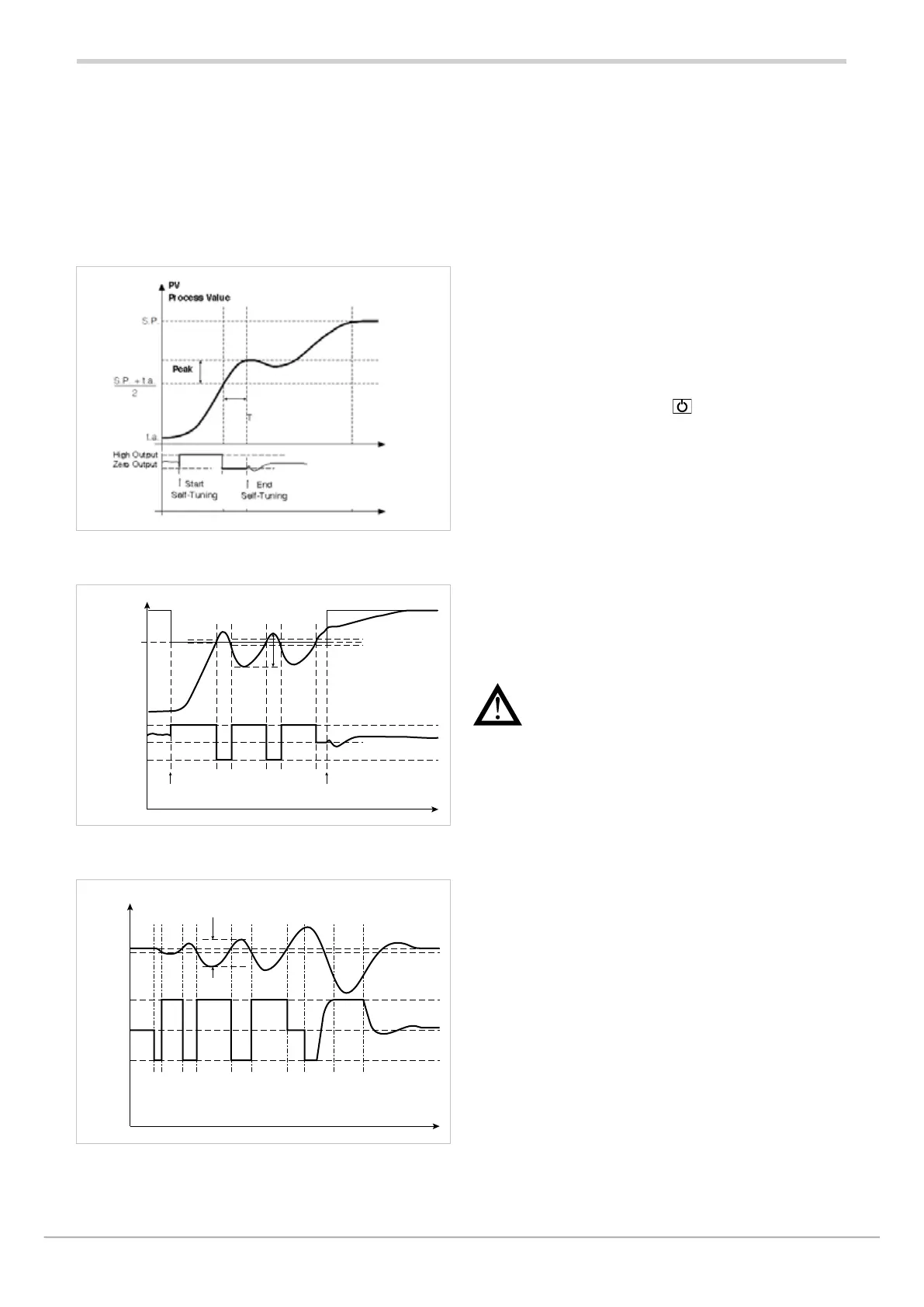80209C_MHW_850-1650-1850_01-2020_ENG_pag. 204
5.10.4. Auto-Tuning
Enabling the Auto-Tuning function blocks the settings of the
PID parameters.
There are two types: continuous and one-shot.
Continuous Auto-Tuning constantly measures system
oscillations, immediately searching for PID parameter values
that reduce the current oscillation.
It does not act if the oscillations drop to values below 1.0%
of the Proportional Band.
It is interrupted if the setpoint changes and automatically
resumes with a constant setpoint.
The calculated parameters are not latched if the device
switches off, if it goes into manual, or if the configuration code
is disabled.
The controller resumes with the parameters programmed
before enabling Auto-Tuning.
The calculated parameters are latched when the function,
enabled from digital input or key
, is disabled.
One-shot” Auto-Tuning can be started manually or
automatically.
It is useful for calculating PID parameters when the system
is around the setpoint.
“One-shot” Auto-Tuning produces a change in the control
output up to a maximum of ± 100% of current control power
(limited with H.P.HI...H.P.LO for heat and with C.P.HI...C.P.LO
for cool) and evaluates the effects in time overshoot.
The calculated parameters are latched. It starts manually via
digital input or via Tuning key after an undershoot/overshoot.
It starts automatically (with error band of 0.5%) when the
PV-SP error goes beyond the set band (programmable at
0.5%,1%, 2%, 4% of full-scale).
Attention! At power-on or after a setpoint change,
automatic start is inhibited for a time equal to five
times the integral time (with minimum of 5 minutes).
The same time has to pass after running “One-
shot” Auto-Tuning.
5.10.5. Examples of tuning
The two diagrams below show the time change in the
monitored value and the change in the controlled tuning
output.
• PV = Process variable
• SP + cSPo = cooling setpoint
• cSPo = C.SP (HI.SCL - LO.SCL) / 100
• C.PB = Proportional cooling band
• SP = heating setpoint
• H.PB = Proportional heating band
Notes
• For the programmer model, if Self-Tuning starts when
the controller is powered-on, the program is in STOP.
• If SP-PV deviation is less than 0.3% f.s., Self-Tuning
switches to “one shot” Auto-Tuning; otherwise it calcu-
lates a point at 75% of deviation around which to start
“one shot” Auto-Tuning, considering a single Heat or
Cool action or a dual Heat/Cool action based on the
type of set control.
Example single action, PV less SP/4
Target
Set point
First
overshoot
Peak to
Peak
Tune Target
Point
High Output
Start
Self-Tuning
End
Self-Tuning
Zero Output
Low Output
±2%f.s.
±1%f.s.
Example dual heat/cool action, PV greater than SP/4
Target
Set point
Peak to
Peak
High
Output
A B
A: Start of Autotune B: End of Autotune
Zero
Output
Low
Output
Example with SP-PV deviation less than 0.3% f.s. dual
heat/cool action
